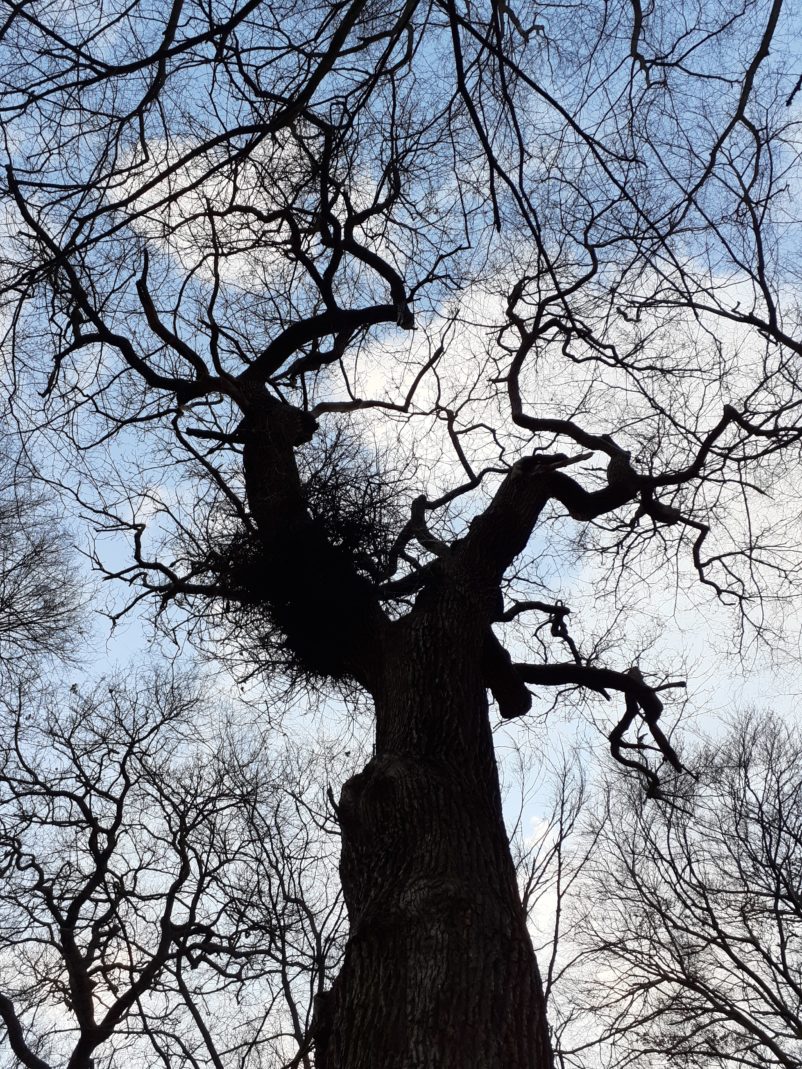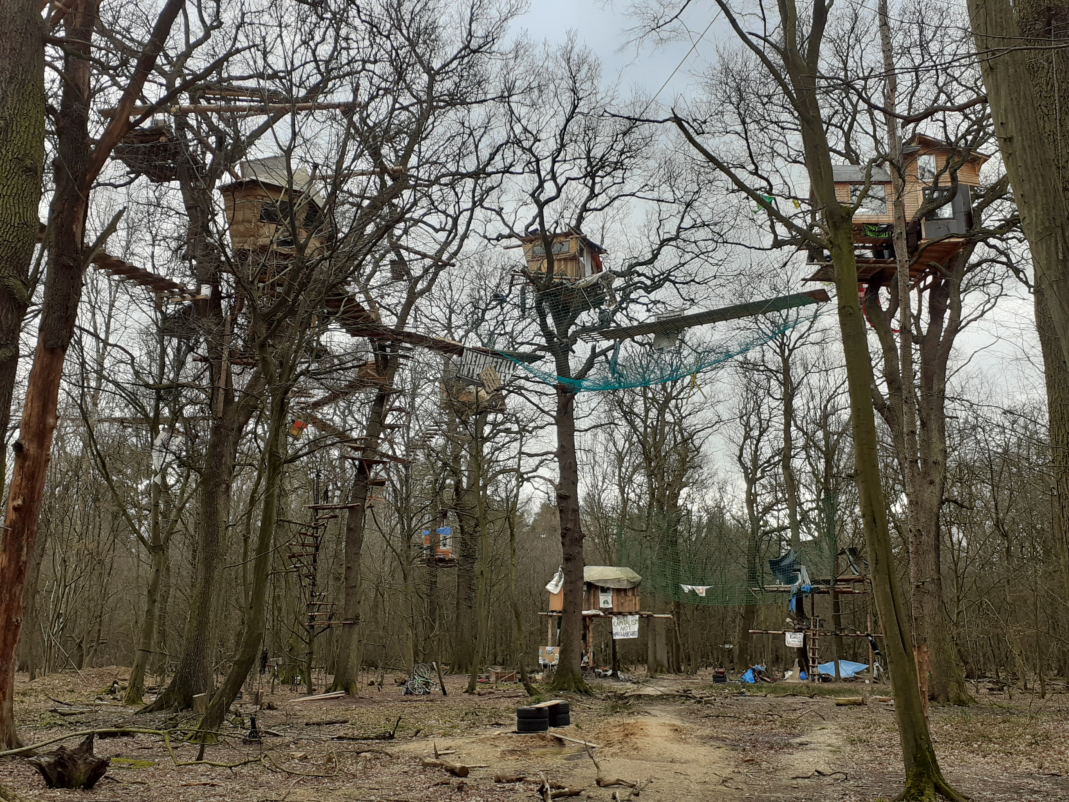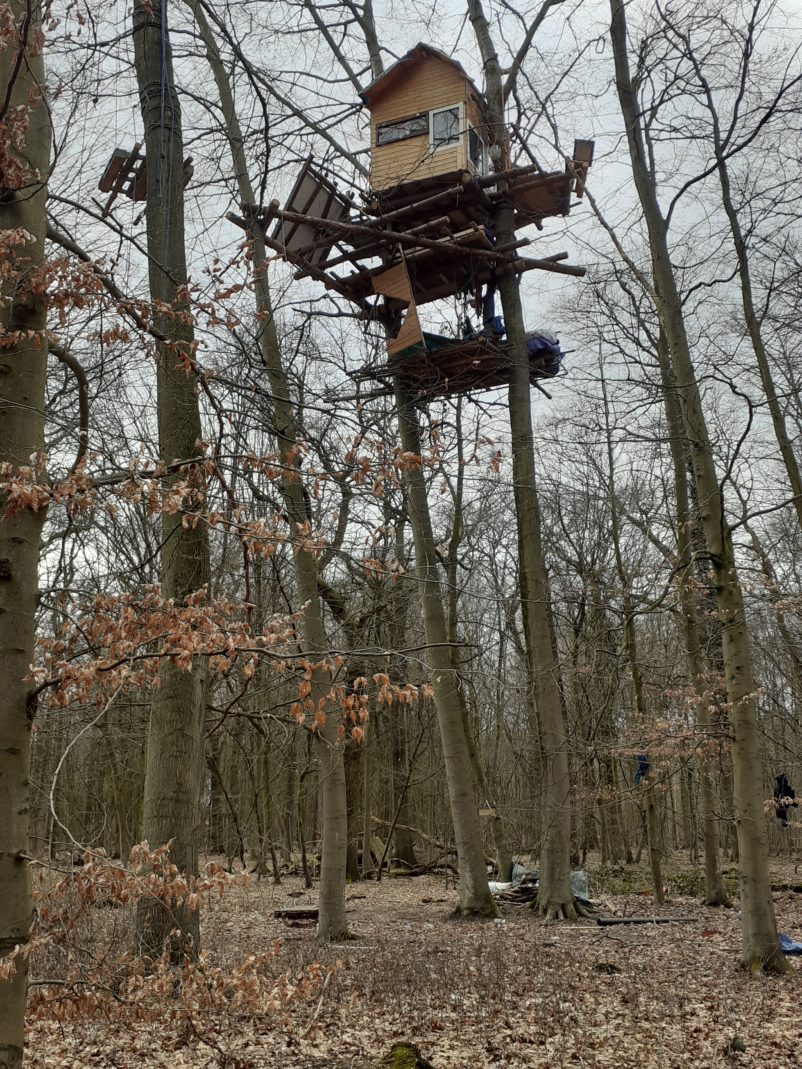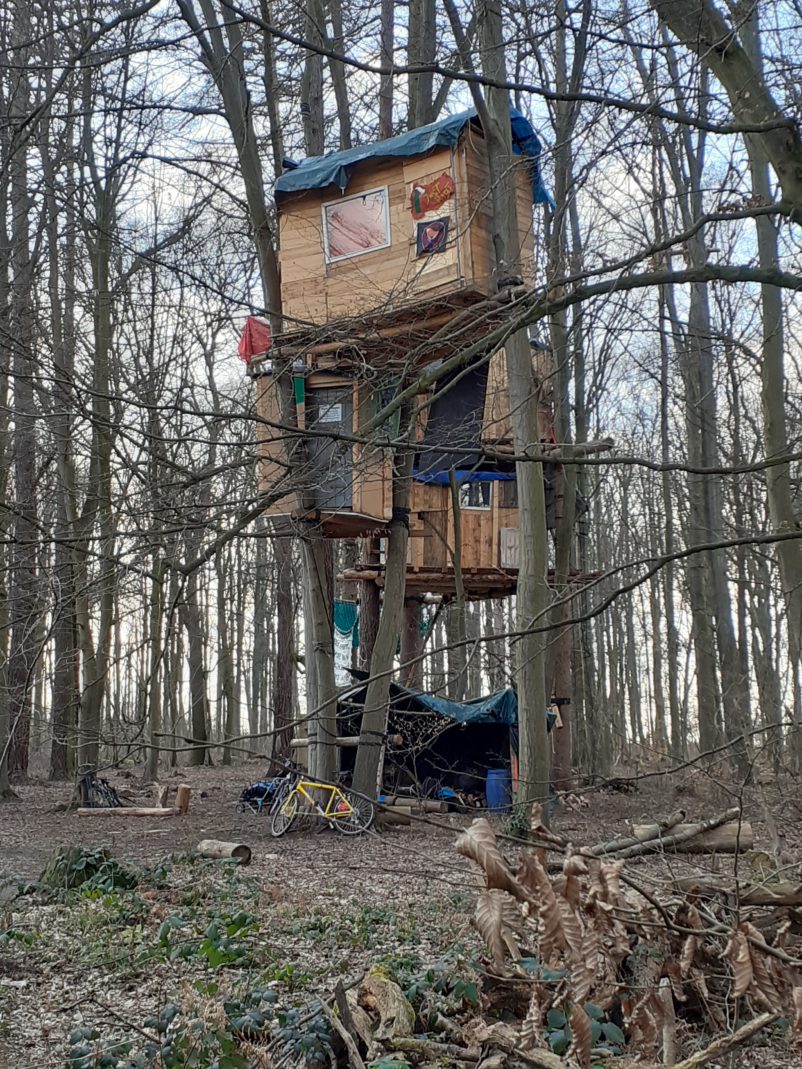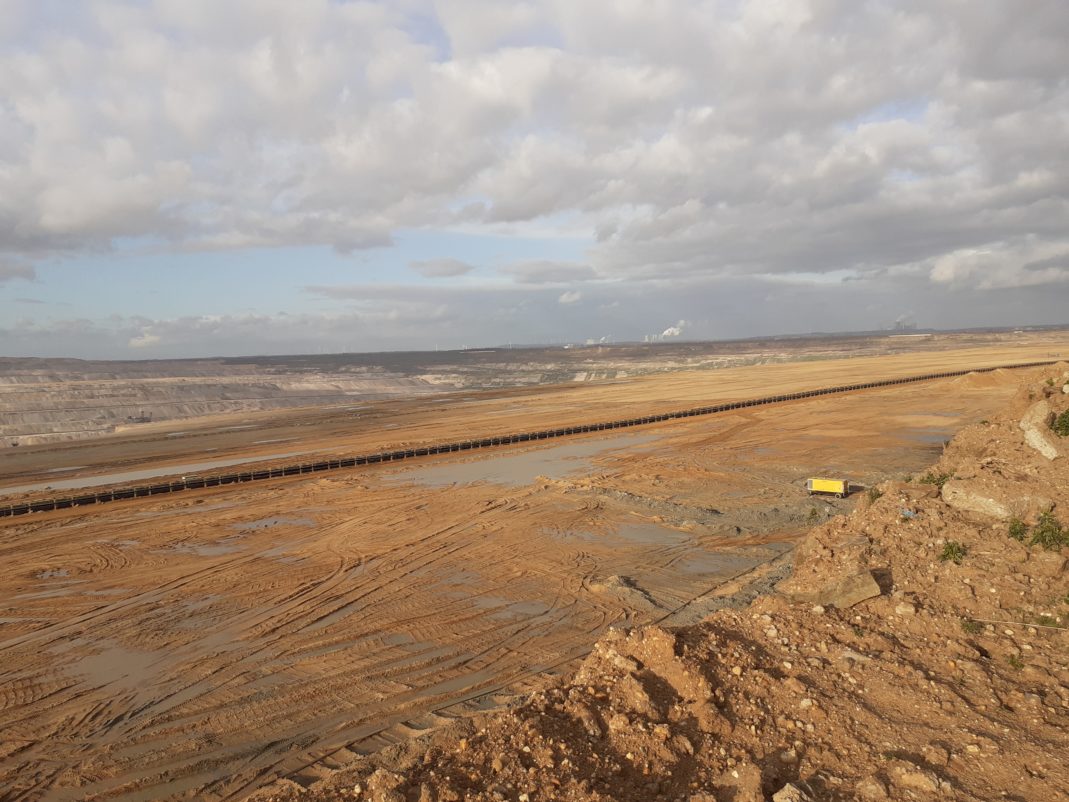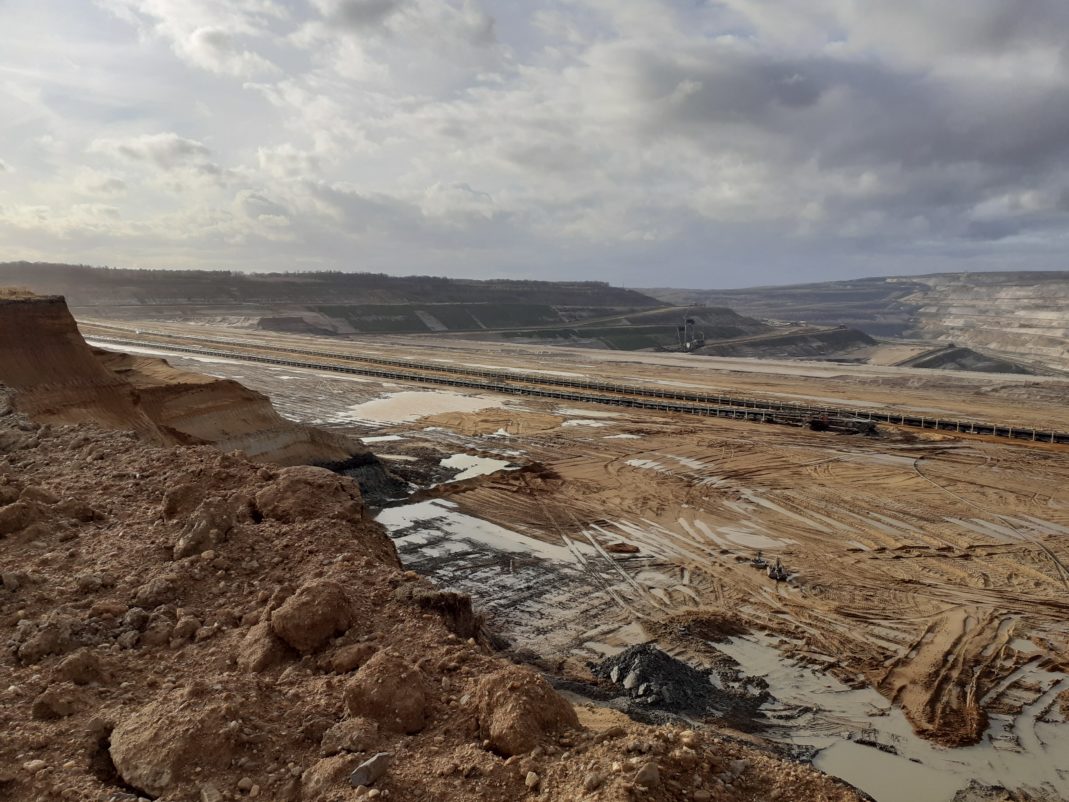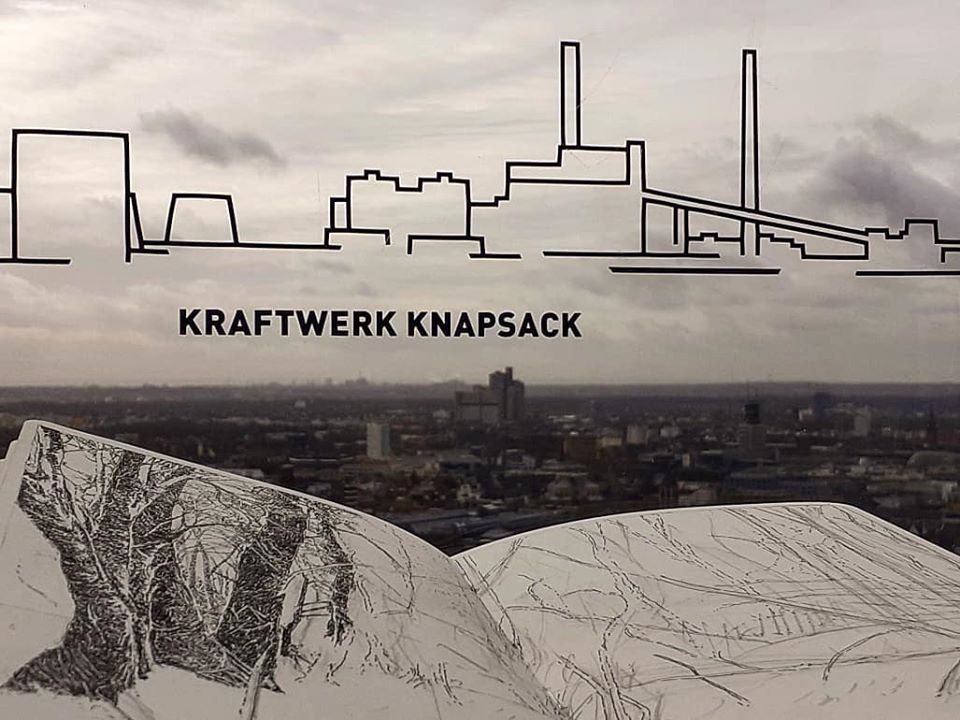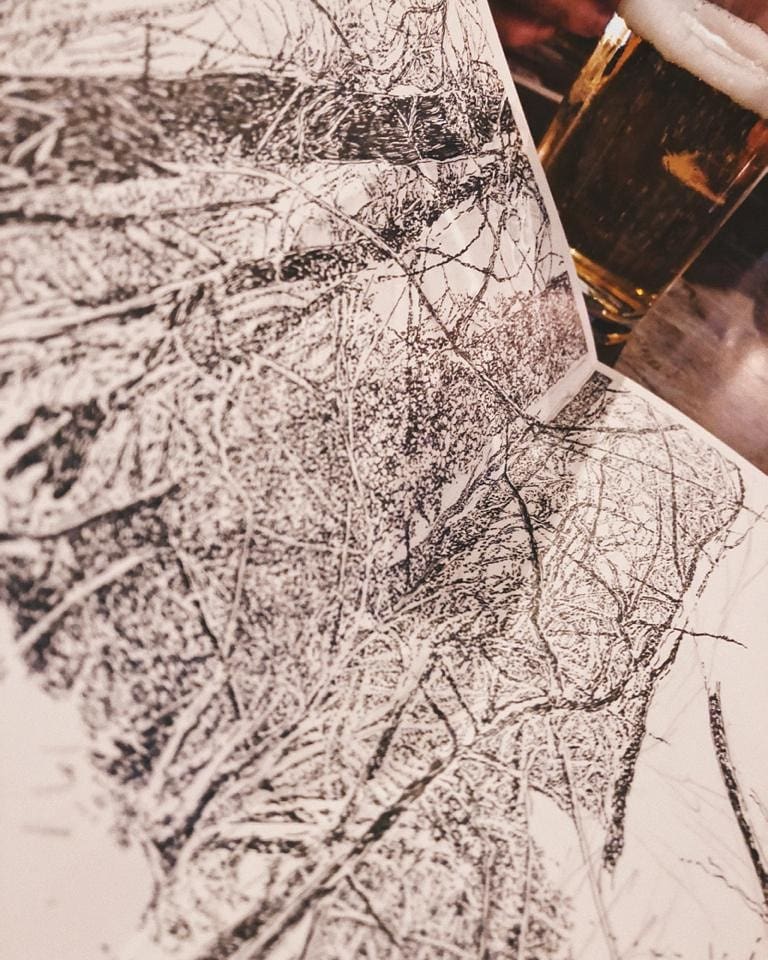The Hambach Forest, which is located between Cologne and Aachen in North Rhine-Westphalia, is one of the oldest and last primary forests in Central Europe. It has been in existence for 12,000 years, which is exceptional. At one time the forest was 5,500 ha in size. Now there are only 1,100 ha left, the rest having been destroyed by the RWE (Reinisch-Westfälisches Elektrizitätswerk) and by opencast lignite mining. For activists living in the forest, it is not just a question of protecting the forest, it is also a question of climate change, health, relocation, expropriation and who makes the decisions.
I was able to visit this forest from February 12 to 22, 2020, and if we go into this forest, if we relax, if we stroll through it, if we draw it, or if we defend it, we will see it in a different way than in terms of numbers, lignite resources, or data. One discovers another perception than the utilitarian one of the territory. Another relationship to the world can then be built, made up of wooded areas, with large trees, or small groves, fir trees, and several networks of habitats as close as possible to nature. What struck me on my first visit was its verticality. This is perhaps first of all what a forest is and what we want to defend in it: a vertical element but also something that, against the absurdity of the administered world, can unfold and invite new relationships with oneself, with others, and with the world.
It is not so much a question of what we commonly imagine a forest to be as much as the uses of and links with forests. It is about how we are a part of it. The Hambach forest is not so much this piece of wilderness as a certain singular composition of links, living beings, and ways of thinking about the world. This forest is above all a sensitive reality, a singular way of inhabiting the world, of thinking about it outside of any form of domination, of imagining it, and of becoming attached to it. Those who live in this forest are fighting for climate justice, which is also a fight for a world without leaders and free of capitalist forces. It is a struggle against a system of domination, destruction and hierarchy. In any case, and this is what makes this forest special in my opinion and makes me want to draw it, it offers a space of individual emancipation for everyone. This forest, along with others such as Notre-Dame-des-Landes, Bure, Gorleben, etc., above all allows the imagination to intensify.
